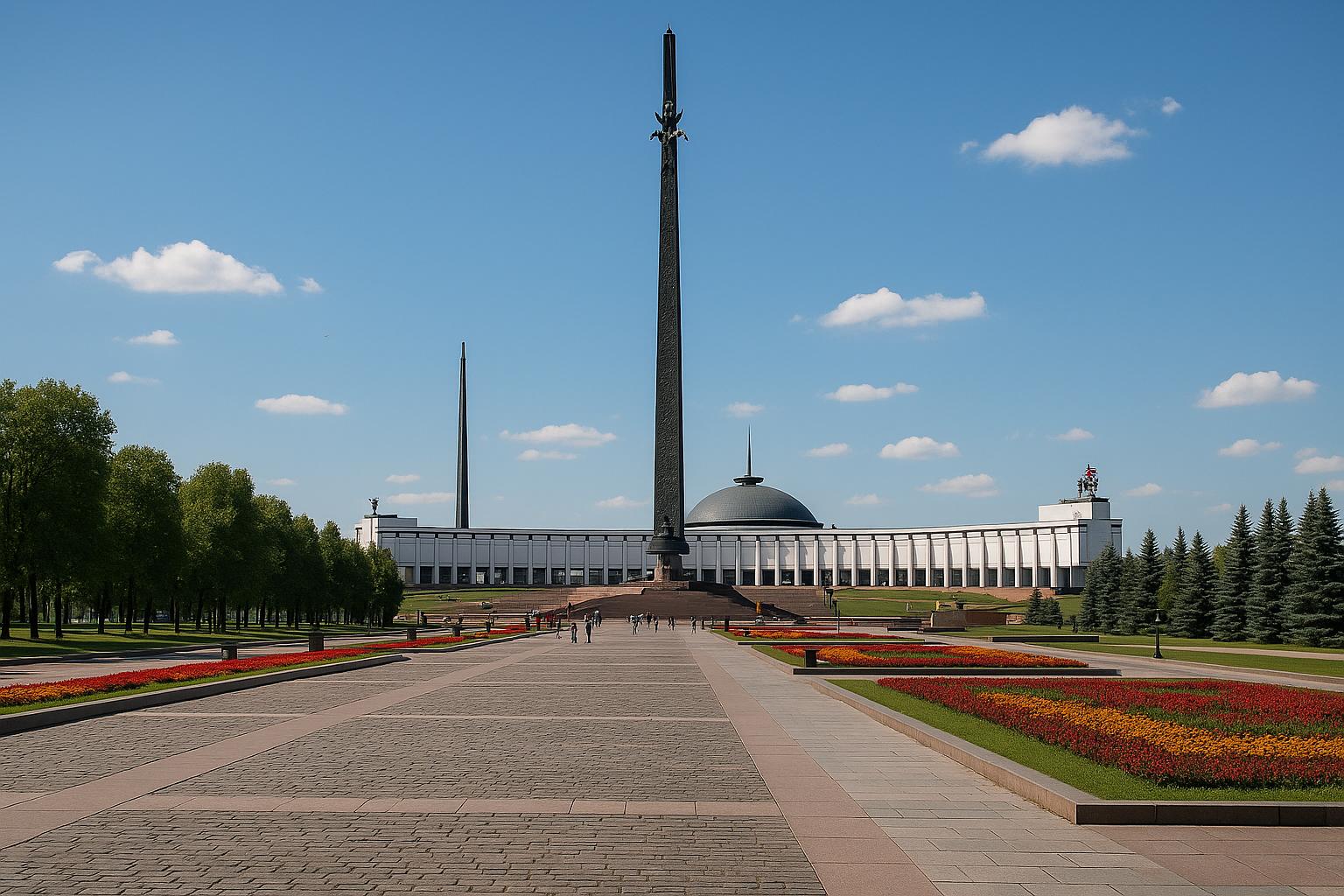Overview of Victory Park
Victory Park, known locally as Poklonnaya Hill, stands as a prominent memorial complex in Moscow, Russia. The park memorializes the Soviet victory during the Great Patriotic War, which refers to the Eastern Front of World War II as it is termed in Russia and other post-Soviet states. Covering an expansive area of approximately 135 hectares, the park offers visitors a blend of natural serenity and a profound journey through pivotal historical moments.
Historical Significance
The historical resonance of Victory Park cannot be overstated. Located on Poklonnaya Hill, the site holds strategic and historical significance dating back to the early 19th century. Remarkably, it was from this very hill that Napoleon once gazed upon Moscow in 1812, amid the throes of the French invasion of Russia. While its strategic vantage has long been recognized, the park’s most enduring association is with the commemoration of the Soviet Union’s role in World War II. The victories and sacrifices of that era are etched into the very fabric of this extensive complex.
Development and Inauguration
The development of Victory Park began in earnest during the 1980s, culminating in a meticulously constructed memorial complex. The decade-long effort saw extensive developments throughout the 1990s, with the park finally opening to the public on May 9, 1995. This date marked a poignant moment in history, the 50th anniversary of the end of World War II, serving as a dual symbol of remembrance and the passage of time. The inauguration of the park bolstered the collective memory of the war, offering a space for reflection and reverence.
Main Attractions
Among the park’s remarkable features is the commanding Victory Monument, an obelisk soaring to a height of 141.8 meters. The towering structure is not arbitrary in its dimensions; it was deliberately designed, with each decimeter representing one day of the Great Patriotic War. At the pinnacle of the obelisk stands a statue of Nike, the Greek goddess of victory, a fitting symbol for the triumph celebrated here.
Adjacent to this imposing structure is the Central Museum of the Great Patriotic War. Within its walls, one finds a rich tapestry of exhibits and historical artifacts that delve deeply into the struggle and eventual success of Soviet forces during the conflict. The museum functions as both a reservoir of knowledge and a tribute to the fortitude displayed in overcoming adversity.
The park’s landscape is punctuated with an array of memorial chapels, symbolic sculptures, and carefully designed fountains, each contributing to the thematic architecture of the space. Among these features, the Tear of Popular Mourning stands out as an evocative series of fountains representing the tears shed during the war—a poignant reminder of the human cost of conflict.
Visitor Experience
Victory Park offers a dynamic experience to its visitors, blending education with reflection. Guests can immerse themselves in history through organized walking tours, explore the museum’s extensive displays, or participate in various commemorative events held throughout the year. The park is purposefully designed to provide a sanctuary for contemplation while simultaneously serving as an educational resource for future generations, ensuring that the sacrifices made during wartime are neither forgotten nor repeated.
For those interested in planning a visit, additional resources related to Moscow’s memorial parks offer valuable information on exploring these historical sites. Victory Park holds an enduring place within the cultural and historical landscape of Moscow, serving as a bridge between past conflicts and contemporary commemoration.
By facilitating an understanding of these significant historical events, the park plays an essential role in fostering appreciation and respect for the resilience and determination demonstrated during one of the most challenging periods in recent history. While visitors are drawn by its serene and educational promise, they leave with a deeper appreciation for the endurance and victory that defined an era.

